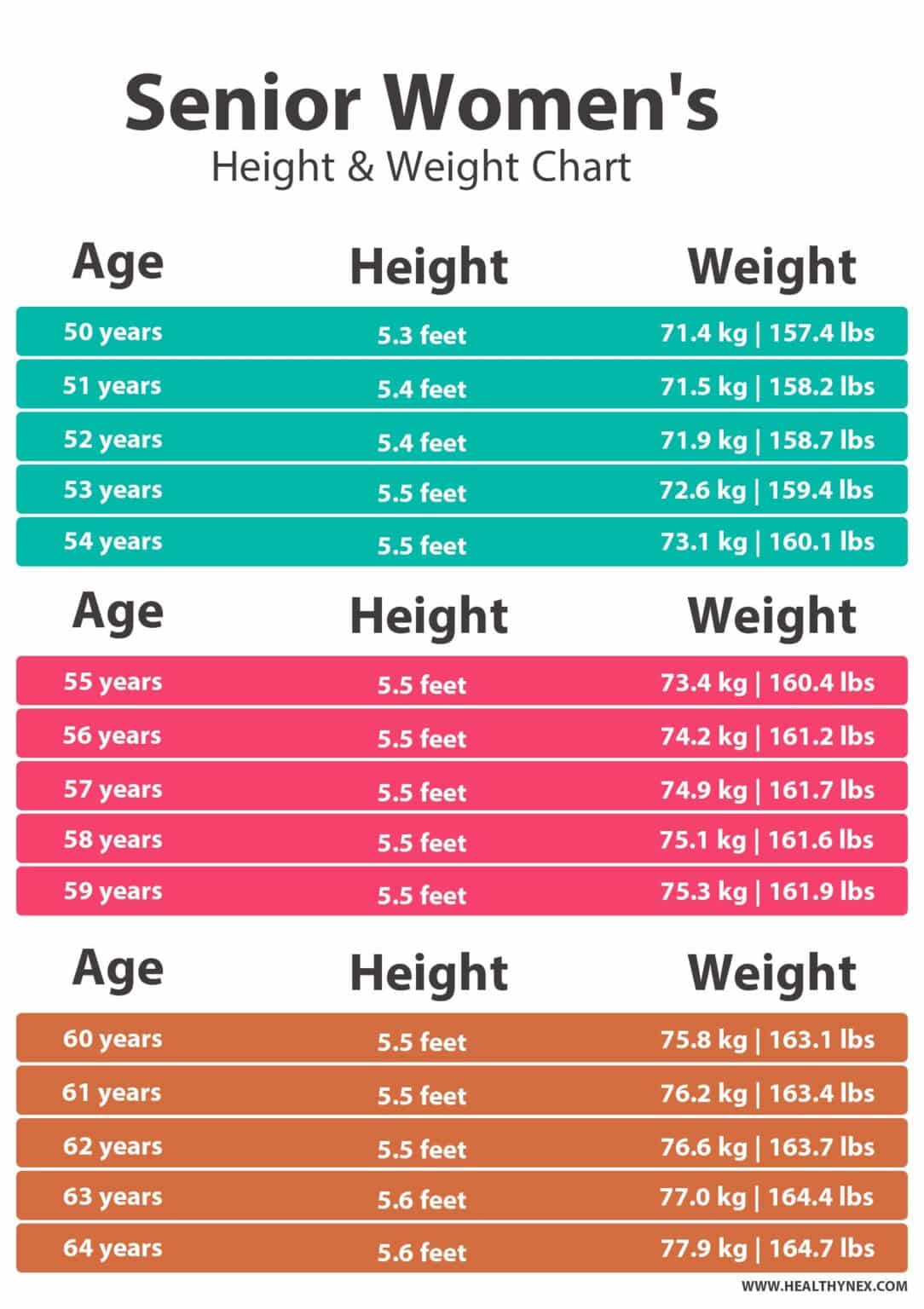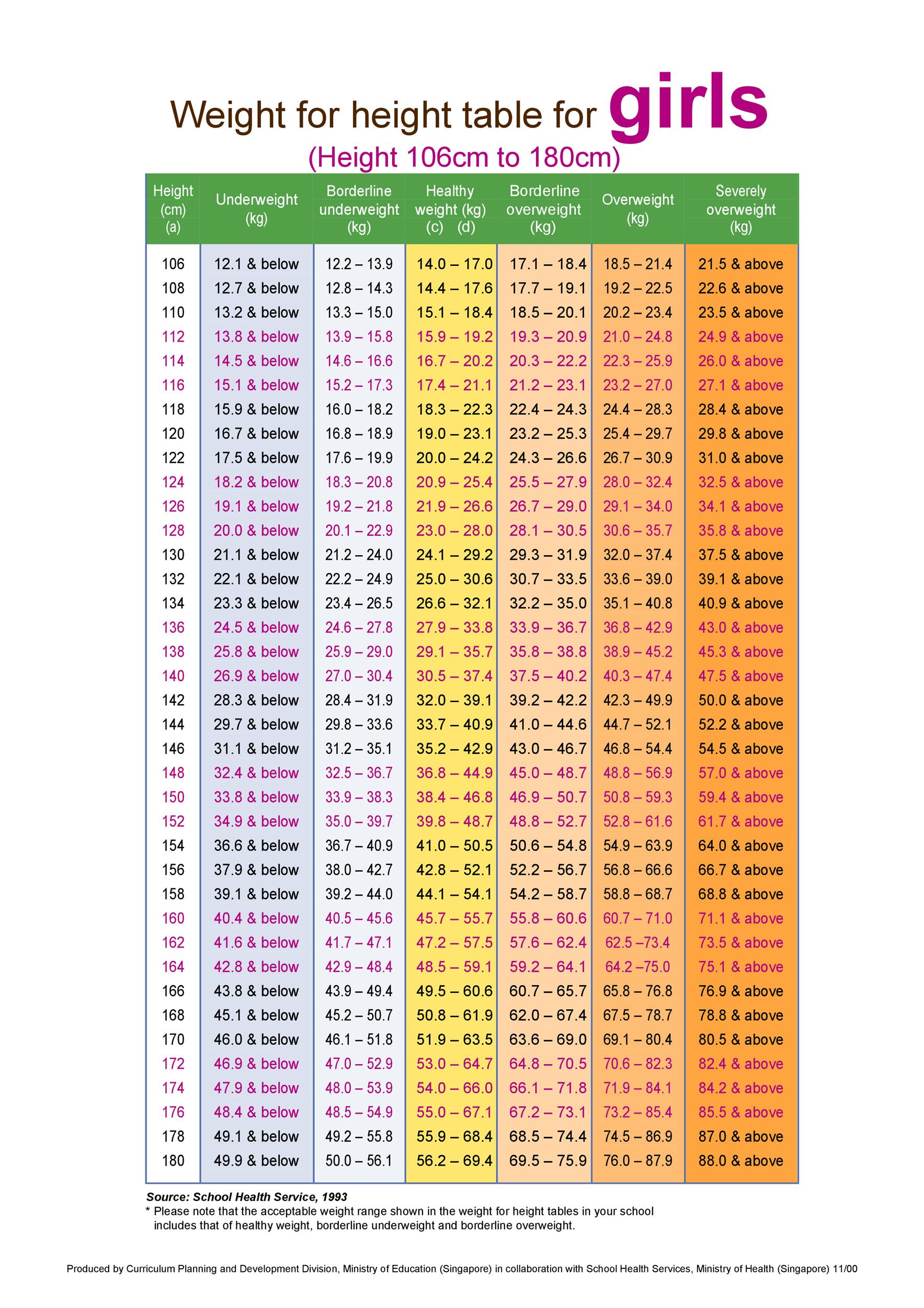Average Height For Women In The US - What's Typical?
Have you ever found yourself wondering about the typical physical measurements for people around you, perhaps even thinking about your own stature? It's a rather common curiosity, you know, to ponder where you might stand, literally, in relation to others. For many, thinking about the average height for women in the US brings up all sorts of thoughts, some practical, some just a bit interesting.
Understanding an average, whether it's about height or something else entirely, often helps us get a general sense of things, but it never tells the whole story, does it? Just like when we look at health information, say, about how a normal resting heart rate for adults typically falls between 60 and 100 beats per minute, we know that variations outside that range don't automatically spell trouble. So, when we talk about the average height for women in the US, it's more of a general idea than a strict rule for anyone.
This discussion will give us a chance to explore what those numbers generally say, where they come from, and why, in some respects, our own individual heights are far more interesting than any broad statistical figure. We'll also touch on some of the things that shape our height, because, actually, it's a pretty complex mix of elements.
- Who Is John Allman The Singer A Deep Dive Into His Life And Career
- Hunter Fieri Net Worth A Deep Dive Into The Life And Wealth Of Guy Fieris Son
- Understanding Kehlanis Age A Comprehensive Insight Into The Life Of The Rising Star
- Exploring The Enigma Freddie Highmores Twin And Their Journey
- Frank From American Pickers The Ultimate Guide To His Life And Career
Table of Contents
- What is the Average Height for Women in the US?
- How Does Genetics Shape the Average Height for Women in the US?
- Beyond the Numbers - What Does 'Average' Really Mean?
- The Story of Growth - From Childhood to the Average Height for Women in the US
- Does Lifestyle Influence the Average Height for Women in the US?
- Are There Regional Differences in the Average Height for Women in the US?
- How Does Time Affect the Average Height for Women in the US?
- Embracing Individuality Beyond the Average Height for Women in the US
What is the Average Height for Women in the US?
When people ask about the typical height for women in the United States, they're usually looking for a specific number. Based on information from health surveys, the average adult woman in the US stands around 5 feet 4 inches, give or take a little bit. This measurement comes from gathering information from a very large group of people, creating a sort of middle ground that represents many individuals. It's similar, you know, to how a diagnosis of high blood pressure is usually based on taking several readings over different visits and then figuring out an average from those numbers. One single reading might not tell the whole story, but a collection of them gives a clearer picture.
This figure, 5 feet 4 inches, is basically a snapshot, a central point derived from countless individual measurements. It’s not a target or a standard that everyone should meet; it’s simply what we find when we look at a big population. So, if you're taller or shorter than that, it doesn't mean anything is out of place. It just means you're part of the beautiful variety that makes up humanity. It's pretty fascinating, really, how a single number can represent so much diversity.
The way these averages are put together is pretty interesting too. Researchers collect data from a wide range of people, making sure they get a good mix of ages and backgrounds. This helps them create a figure that is, in a way, as fair a representation as possible for the entire country. Just like understanding how much fluid the average person needs each day to stay hydrated, knowing the average height gives us a general idea, but personal needs and characteristics always play a much bigger role.
- Movierulzbe The Ultimate Guide To Streaming Movies And Tv Shows
- Livvy Dunne Leaka The Rising Star In The Social Media And Sports World
- Understanding The Ages Of Backstreet Boys A Comprehensive Overview
- Tia Kemp Net Worth 2024 A Comprehensive Analysis
- Air Astana 2024 Video A Comprehensive Guide To Kazakhstans Leading Airline
How Does Genetics Shape the Average Height for Women in the US?
It's pretty clear that our family tree plays a very significant part in how tall we end up being. Think about it: you probably know families where everyone is either quite tall or quite short. That's genetics at work, more or less. The genes we get from our parents carry instructions for many of our physical traits, and height is definitely one of them. So, while we talk about the average height for women in the US, it's important to remember that individual heights are heavily influenced by these inherited blueprints.
While there isn't just one "height gene," there are many different genes that work together to influence how tall a person grows. These genetic instructions affect things like bone growth, hormone production, and even how our bodies use nutrients. It's a bit like a recipe, where many different ingredients come together to create the final dish. So, you know, if your parents are both on the taller side, you might typically expect to be taller yourself, and the same goes for shorter statures.
However, genetics aren't the only piece of the puzzle, not completely. They set a sort of potential range for your height. Where you land within that range can be influenced by other factors, which we'll get into a little later. But fundamentally, the genetic hand you're dealt plays a pretty big role in shaping your ultimate stature, contributing quite a bit to the overall spread of heights that make up the average height for women in the US.
Beyond the Numbers - What Does 'Average' Really Mean?
When we hear a number like "average height for women in the US," it's easy to think of it as some sort of ideal or a benchmark that everyone should strive for. But that's actually not what "average" means at all. An average is just a statistical middle point, a way to summarize a lot of different individual measurements. It tells us what's common, not what's necessarily "normal" for everyone. For example, a normal resting heart rate for adults typically ranges from 60 to 100 beats per minute, but a heart rate slightly above or below that range might not signal a problem at all for a particular individual. It's about what's typical for *you*.
Think of it this way: if you lined up every adult woman in the US by height, the average would be the person right in the middle. But there would be countless women who are shorter and countless women who are taller, and all of them are perfectly fine and "normal" in their own way. So, the average height for women in the US is more of a descriptive tool than a prescriptive one. It helps researchers and health organizations understand population trends, but it doesn't define personal well-being or individual worth. It's, like, just a number.
Understanding this difference is pretty important, because focusing too much on an average can sometimes make people feel like they don't quite measure up if they fall outside of it. But truly, our bodies are incredibly diverse, and that's something to celebrate. So, when you hear about the average height for women in the US, remember it's just one piece of information in a much larger, richer picture of human variety. It's really just a general guide, you know?
The Story of Growth - From Childhood to the Average Height for Women in the US
Our height isn't something we're born with fully formed; it's a process, a gradual unfolding that starts the moment we're conceived and continues through childhood and adolescence. Infant growth rates, for instance, depend on various factors, and what's typical during a baby's first year can vary quite a bit from one little one to the next. This early growth sets the stage, but the journey to adult height is a long one, marked by growth spurts and slower periods, all leading to what eventually contributes to the average height for women in the US.
Children experience their most rapid growth during infancy and then again during puberty. For girls, this pubertal growth spurt typically begins earlier than for boys, often around ages 8 to 13. During these years, bones lengthen quickly, and a person's height increases significantly. This period is pretty amazing to witness, actually, as young bodies transform. The speed and timing of these spurts are unique to each individual, influenced by that genetic blueprint we talked about, but also by things like overall health and nutrition.
By the time a woman reaches her late teens, usually around 18 or 19, her bones have mostly finished growing, and her adult height is largely set. This final height, a culmination of years of development, then becomes one of the many data points that contribute to the statistical average height for women in the US. It's a fascinating progression, really, from a tiny infant to a fully grown adult, each step a part of a very complex biological dance.
Does Lifestyle Influence the Average Height for Women in the US?
While genetics certainly lay down the main framework for our height potential, the way we live our lives, especially during our growing years, can definitely play a part in whether we reach that full potential. Things like the food we eat and our general well-being have a pretty big say. For your body to function properly, you must replenish its water supply by consuming beverages and foods that contain water, and this principle extends to all nutrients needed for growth. A diet that's rich in vitamins, minerals, and proteins provides the building blocks necessary for bones and tissues to grow strong and long. So, good nutrition, especially in childhood, is very important.
Beyond what we eat and drink, general health conditions can also influence height. Chronic illnesses or significant nutritional deficiencies during childhood can, in some cases, hinder growth. Think about how moderate to vigorous exercise intensity is suggested for getting the most out of physical activity; similarly, a generally active and healthy lifestyle supports overall bodily development, including height. It’s not that a specific exercise makes you taller, but rather that a healthy body is better equipped to grow to its full genetic potential. So, in a way, taking care of yourself helps your body do what it's meant to do.
So, yes, while you can't magically add inches to your height as an adult, the environment and lifestyle choices during childhood and adolescence can certainly influence where you land within your genetically determined range. These factors contribute to the overall health and growth patterns observed across the population, subtly shaping the average height for women in the US over time. It's a pretty subtle but important connection, you know?
Are There Regional Differences in the Average Height for Women in the US?
When we talk about the "average height for women in the US," it’s a national figure, but the United States is a really big place, with lots of different communities and backgrounds. It’s natural to wonder if there might be variations in height averages from one region to another. While large-scale studies tend to provide a single national average, smaller, more localized data might show slight differences. These variations could be due to a mix of factors, like historical migration patterns, which influence the genetic makeup of local populations, or even regional dietary habits that have been passed down through generations. So, it's not entirely uniform, perhaps.
Consider how different health conditions can progress differently based on various factors, like how far a disease has advanced when diagnosed for conditions like Alzheimer's. Similarly, the "health" of a population's growth potential might vary based on local conditions. For instance, communities with better access to diverse, nutrient-rich foods or those with long-standing traditions of certain types of physical activity might, hypothetically, see slightly different average heights. These are not huge differences, mind you, but rather subtle shifts that contribute to the overall picture of the average height for women in the US. It's pretty interesting to think about how local nuances can play a part.
It's important to remember, however, that these are often minor variations within a generally consistent national trend. The US population is incredibly mobile and diverse, which tends to smooth out significant regional height differences over time. So, while a small study might point to a slight variation here or there, the overall national average remains a pretty good representation of the typical height for women across the country. It's, like, generally consistent.
How Does Time Affect the Average Height for Women in the US?
Our bodies change over time, and height is no exception. When we consider the average height for women in the US, we can look at it in two ways: how it changes across generations and how it changes within a single person's lifetime. Over the past century or so, there's been a general trend for people in many developed countries, including the US, to become taller, generation by generation. This is often linked to improvements in nutrition, healthcare, and living conditions. It’s a bit like how life expectancy for conditions like Alzheimer's can vary widely, with some living 20 years or more after diagnosis, depending on various factors that change over time, including advancements in care. So, the average height for women in the US today is likely a bit taller than it was a hundred years ago.
Then there's the individual journey. You know that aging will likely cause wrinkles and gray hair, but it also affects other parts of your body, including your bones and spine. As people get older, especially past middle age, it's pretty common to lose a little bit of height. This is usually due to factors like the compression of discs in the spine and a slight decrease in bone density. It's typically not a dramatic change, just a small, gradual shortening that happens as part of the natural aging process. So, a woman who was 5 feet 5 inches at age 30 might find herself a quarter or half an inch shorter by the time she's 70. It's, like, a very normal part of getting older.
So, time plays a double role here: shaping the average height for women in the US across different eras due to societal improvements, and also influencing individual height as we progress through our own years. Both aspects show how dynamic our bodies and populations truly are. It’s a pretty interesting way to think about how we grow and change.
Embracing Individuality Beyond the Average Height for Women in the US
After looking at statistics, genetics, growth, and lifestyle, it becomes pretty clear that while an "average height for women in the US" exists, it's just a number, a point on a very wide spectrum. What truly matters is understanding and appreciating your own unique body. Just as keeping track of your menstrual cycles can help you understand what's typical for *you* – including finding important changes like a missed period – knowing your own height and how it fits into your personal story is far more valuable than comparing it to a national average. Your height is just one part of what makes you, well, you.
There's no single "right" height, just as there's no single "right" way for a body to function perfectly in every aspect. Whether you're shorter, taller, or right around the average height for women in the US, your stature is simply one of your many physical characteristics. It doesn't define your abilities, your personality, or your worth. Instead of focusing on a number, it's often more helpful to appreciate the incredible diversity of human forms. So, really, it’s about accepting yourself as you are.
Ultimately, while knowing population averages can be interesting for general knowledge, the real beauty lies in individual differences. We are all unique, and our varying heights are just another example of that wonderful fact. It's a pretty powerful idea, that we can all be different and yet all be perfectly, wonderfully ourselves. Just like you might be getting more caffeine than you think you are from your daily drinks, there's often more to learn about your own body and its unique patterns than any general statistic can tell you.
- Frank Fritz Of American Pickers The Journey Of A Treasure Hunter
- When Did Frank Fritz Pass Away A Comprehensive Look Into His Life And Legacy
- Zoe Perry Husband Discovering The Life And Love Of The Talented Actress
- Joe Rogans Oldest Daughter A Deep Dive Into Her Life And Impact
- Movierulzbe The Ultimate Guide To Streaming Movies And Tv Shows

Average Height For Women 2024 - Norry Antonina

Average Height For Women 2024 - Norry Antonina

Average Height For Women 2024 - Norry Antonina